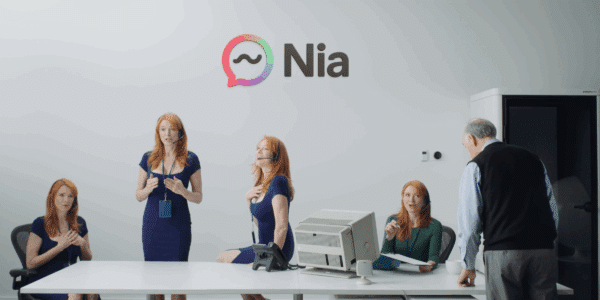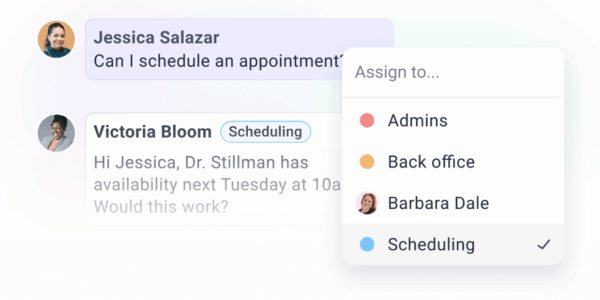
In today’s fast-paced digital world, it is essential for healthcare providers to maximize digital call deflection in order to meet the increasing demands and expectations of patients. By understanding what digital call deflection is and why it is important in healthcare, implementing effective strategies, studying successful case studies, and measuring its impact, providers can overcome challenges and ensure a seamless patient experience. Let’s delve into each aspect of this vital topic.
Understanding Digital Call Deflection
Digital call deflection refers to the practice of diverting or reducing the number of incoming calls to a healthcare facility by providing alternative digital channels for patients to seek information or resolve their queries. It aims to alleviate the burden on call centers and enable patients to efficiently access the care they need.
With the advancement of technology, healthcare organizations have recognized the need to adapt and integrate digital solutions into their operations. Digital call deflection is one such solution that leverages technology to empower patients and enable them to find answers to their questions or complete transactions through digital self-service options.
What is Digital Call Deflection?
Call deflection involves leveraging technology to empower patients and enable them to find answers to their questions or complete transactions through digital self-service options. These options may include online portals, chatbots, virtual assistants, or automated phone systems.
Online portals provide patients with a convenient and user-friendly platform to access information about their healthcare needs. They can schedule appointments, view test results, and communicate with their healthcare providers, all from the comfort of their own homes. Chatbots and virtual assistants, on the other hand, use artificial intelligence to interact with patients and provide them with real-time assistance. These automated systems can answer frequently asked questions, guide patients through the registration process, or even provide basic medical advice.
Automated phone systems are another component of digital call deflection. These systems use interactive voice response (IVR) technology to guide patients through a series of prompts and menu options. Patients can use their touch-tone phones or voice commands to navigate the system and access the information they need. This not only reduces the need for human intervention but also ensures that patients can find the information they need at any time, without having to wait for a representative to become available. There are also ways through the OhMD solution to convert a voicemail into a text message for your team to review.
The Importance of Digital Call Deflection in Healthcare
In an era of long wait times and increasing patient volumes, this approach is crucial for healthcare organizations. It not only streamlines patient access to care but also enhances operational efficiencies, reduces costs, and improves patient satisfaction.
By harnessing the power of technology, providers can meet the evolving expectations of patients who increasingly prefer digital interactions. With the ability to access information and complete transactions online, patients can avoid the frustration of waiting on hold or navigating complex phone menus. Instead, they can find the information they need quickly and conveniently, allowing them to make informed decisions about their healthcare.
Furthermore, digital call deflection allows healthcare organizations to optimize their resources. By diverting non-urgent inquiries to digital channels, call centers can focus on handling more complex or urgent cases. This not only improves the efficiency of call center operations but also ensures that patients with critical needs receive prompt attention.
In addition to improving patient access and operational efficiencies, digital call deflection also has financial benefits for healthcare organizations. By reducing the number of incoming calls, providers can save on staffing costs associated with call center operations. Furthermore, the implementation of digital self-service options can lead to cost savings in the long run, as these systems can handle a high volume of inquiries without the need for additional human resources.
Overall, digital call deflection is a valuable strategy for healthcare organizations looking to enhance patient access, improve operational efficiencies, reduce costs, and meet the evolving expectations of patients. By embracing technology and providing alternative digital channels, healthcare providers can ensure that patients can access the care they need in a convenient and efficient manner.
Strategies for Maximizing Digital Call Deflection
Now that we understand the importance of digital call deflection, let’s explore some effective strategies for implementation.
Implementing Self-Service Options
One effective strategy is to implement self-service options through online portals or mobile applications. By providing patients with access to their medical records, appointment scheduling, or medication refills, healthcare providers can empower patients to manage their healthcare needs independently, reducing the need for phone inquiries.
Utilizing AI and Chatbots
The use of artificial intelligence (AI) and chatbots has revolutionized digital call deflection. AI-powered chatbots can handle routine inquiries, guiding patients through the process and providing accurate information in real-time. These virtual assistants are available 24/7, ensuring patients can access the information they need at their convenience.
Enhancing Online Patient Portals
Improving the functionality and user experience of online patient portals can also contribute significantly to digital call deflection. Enhancements such as intuitive navigation, quick access to relevant information, and interactive features can empower patients to find the answers they seek without the need for a phone call.
Case Studies of Successful Digital Call Deflection
Let’s examine some real-world examples of healthcare organizations who have successfully implemented digital call deflection strategies.
Texas Hospital’s Approach to Call Deflection
A hospital in Dallas implemented an AI-powered chatbot named “HealthBot” on their website. This chatbot can answer common questions about appointment scheduling, prescription refills, and general health inquiries. By effectively deflecting calls through this virtual assistant, the hospital experienced a significant reduction in call volume, freeing up staff to focus on complex patient needs.
Orthopedic Practice’s Use of AI in Call Deflection
A bone and joint clinic utilized AI technology to enhance their online patient portal. They integrated a virtual triage system that allowed patients to input their symptoms and receive immediate recommendations for appropriate care based on the severity of their condition. By enabling patients to assess their symptoms digitally, this clinic reduced unnecessary phone calls and ensured that those who truly needed assistance received prompt attention.
Measuring the Impact of Digital Call Deflection
Measuring the impact of digital call deflection is crucial to evaluate the effectiveness of implemented strategies and make necessary adjustments.
Key Performance Indicators for Call Deflection
Healthcare providers can track key performance indicators (KPIs) to measure the success of their digital call deflection efforts. KPIs can include call volume reduction, average call handling time, patient self-service utilization, and patient satisfaction ratings.
Evaluating Patient Satisfaction and Experience
Patient feedback and satisfaction surveys are invaluable in understanding the impact of digital call deflection on their experience. Providers should regularly collect patient feedback to identify areas for improvement and ensure that the implemented strategies align with patient needs and preferences.
Overcoming Challenges in Digital Call Deflection
While digital call deflection offers significant benefits, healthcare providers may face several challenges in its implementation.
Addressing Technological Barriers
Investing in the right technology infrastructure is essential to support digital call deflection efforts. Providers must ensure that their systems can handle the increased digital interactions and operate seamlessly across various devices and platforms. Regular system updates and maintenance are vital to avoid unexpected disruptions.
Ensuring Patient Privacy and Security
As healthcare organizations embrace digital solutions, safeguarding patient privacy and data security is paramount. Providers must adhere to stringent regulations and implement robust security measures to protect patient information. Transparent communication about privacy policies and proactive measures to address patient concerns are essential to build trust and encourage adoption of digital platforms.
In conclusion, maximizing digital call deflection in healthcare is a necessity in today’s digital age. By understanding the concept, implementing effective strategies, studying successful case studies, measuring impact, and overcoming challenges, healthcare providers can enhance patient access to care, improve operational efficiencies, and deliver a seamless patient experience. Embracing digital call deflection not only benefits healthcare organizations but also empowers patients to take control of their healthcare journey.


